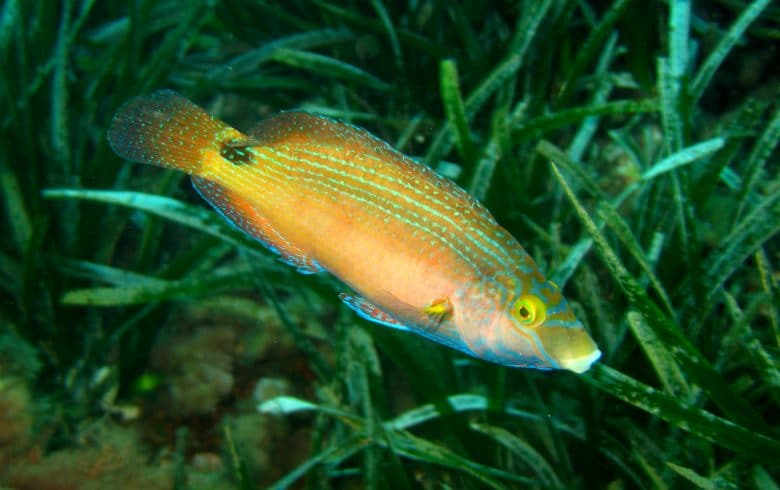
In this particular member of the vast labridae family, sexual dimorphism is very noticeable. The females are yellowish-brown with dark brown spots and a dark blue urogenital papilla. The males are brownish, greenish, pink or blue-grey with blue lines and spots and their colours become very vivid during breeding season. Both males and females have large black blotches on their caudal peduncle and at the base of the pectoral fins. They are about 15cm long and feed on a diet of molluscs, worms and sea urchins. They can be found in the Mediterranean and in nearby Atlantic waters but not in the Black Sea. They live in Posidonia seagrass beds and on rocky bottoms down to 50m.
Phylum: Vertebrates
Class: Osteichthyes
Order: Perciformes
Family: Labridae
Scientific name: Symphodus mediterraneus
French: Crénilabre méditerranéen
Spanish: Tordo de roca
Italian: Tordo rosso
German: Mittelmeer Lippfisch






















